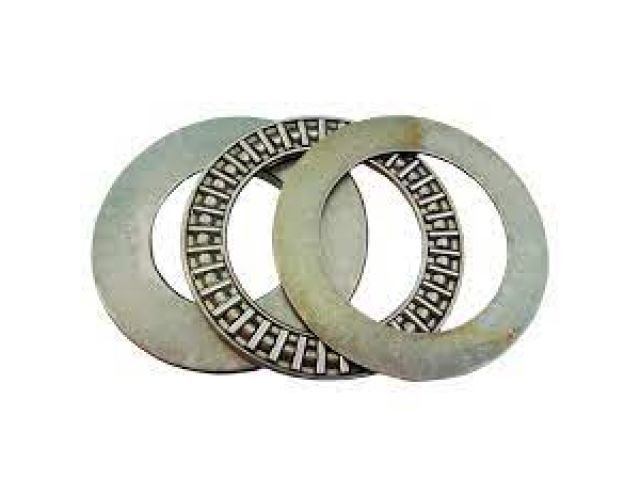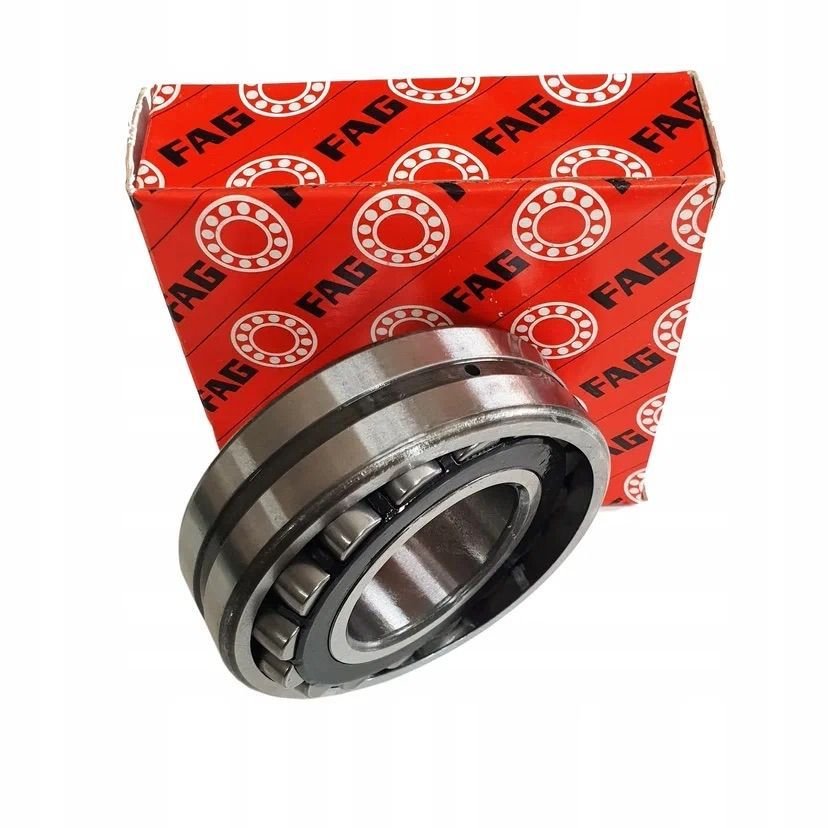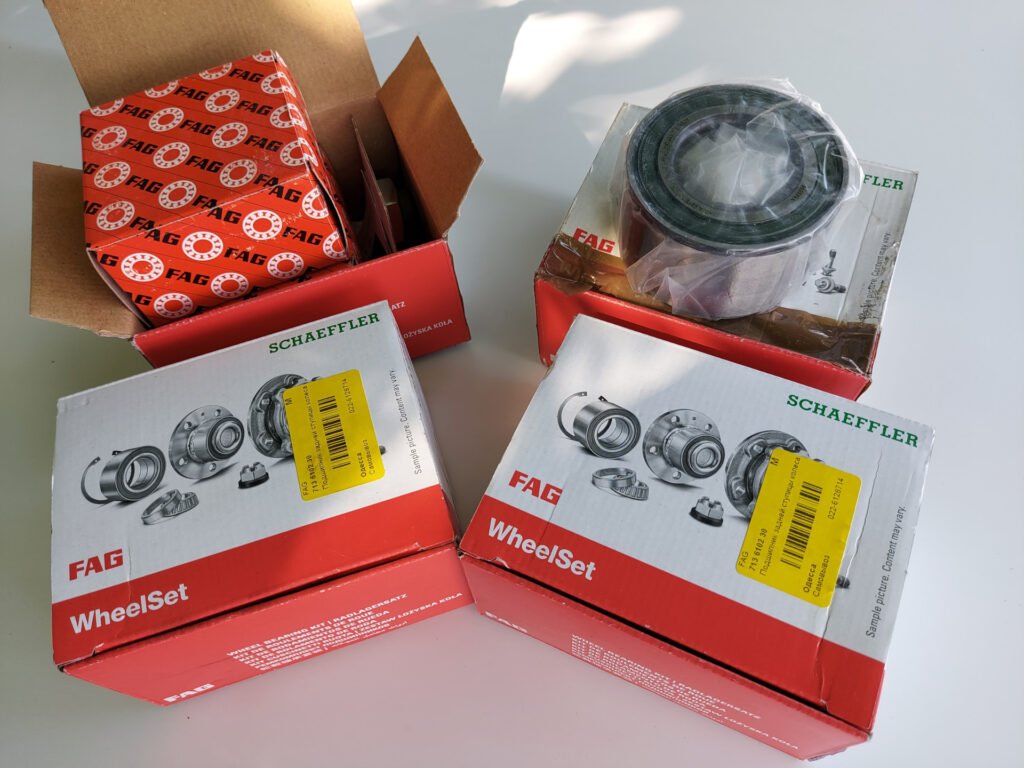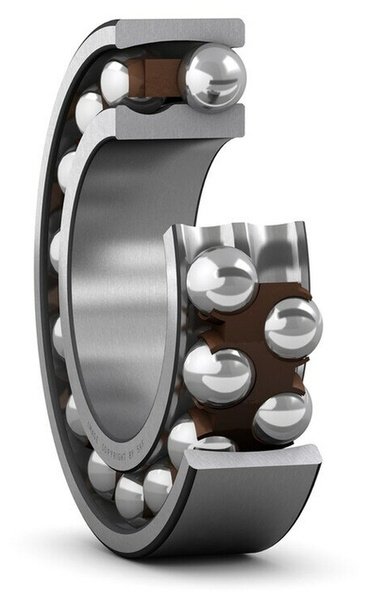Blog Sollosshop
WASHERS FOR BEARINGS

There are several different types of washers that are used for bearings. Here are some of them:
-
Thrust washers: Thrust washers are used to distribute the load on the bearing and prevent it from shifting. They can be flat or conical and are usually made of metal or plastic.
-
Gasket washers: Gasket washers are used to compensate for backlash or align the bearing. They are usually ring-shaped and can be made of a variety of materials, including metal, plastic, and rubber.
-
Protective washers: Protective washers are used to prevent dirt, dust, moisture and other contaminants from entering the bearing. They are usually mounted at the end of the shaft or inside the housing and can be made of metal or plastic.
-
Separating washers: Separating washers are used to install and separate various bearing components such as inner and outer rings. They usually have the shape of a thin ring and can be made of metal or plastic.
-
Self-centering washers: Self-centering washers are used to automatically align the bearing and compensate for small alignment errors. They usually have a special design that allows them to move within a certain angle.
Depending on the specific requirements and conditions of use of the bearing, it may be necessary to use one or more types of washers. It is recommended that you contact the bearing manufacturer or a bearing consultant to get recommendations on choosing the right washers for your application.
How to choose bearing washers:
The selection of bearing washers depends on several factors, including the type of bearing, dimensions, load, speed and operating conditions. Here are a few steps to help you choose the right bearing washers:
-
Determine the type of bearing: First determine the type of bearing you are using. It can be a radial bearing, thrust bearing or a combined bearing. Each type of bearing may require specific washers.
-
Specify the dimensions: Determine the dimensions of the bearing, including inner and outer diameters, widths and radii. These parameters will be used to select the appropriate washers.
-
Evaluate the load and speed: Determine the expected load and speed at which the bearing will operate. This will help determine the requirements for the strength and wear resistance of the washers.
-
Consider the operating conditions: Analyze the operating conditions, including temperature, humidity, the presence of aggressive media and other factors that may affect the choice of washers. For example, in some cases it may be necessary to use washers that are resistant to corrosion or high temperatures.
-
Contact the manufacturer or a specialist: If you have doubts or need more detailed advice, it is recommended to contact the bearing manufacturer or a bearing specialist. They will be able to provide you with recommendations and solutions based on your specific requirements.
Remember that choosing the right bearing washers is important to ensure reliable and efficient bearing operation. Follow the steps above and ask for help if you have any questions or doubts.
You can order washers for bearings of the best quality and at a reasonable price at a convenient time in the following ways:
Buy washers for bearings on https://sollosshop.com/
Delivery of washers for bearings to https://sollosshop.com/
Order washers for bearings at https://sollosshop.com/
How to choose washers for bearings on https://sollosshop.com/
Order washers for bearings on the website https://sollosshop.com/
Online ordering of washers for bearings in https://sollosshop.com
WWW.SOLLOSSHOP.COM
e-mail: Shop@sollosshop.com
WhatsApp, Telegram: +48694149392
PODKŁADKI DO ŁOŻYSK
Istnieje kilka różnych rodzajów podkładek, które są używane do łożysk. Oto niektóre z nich:
-
Podkładki oporowe: podkładki oporowe służą do rozłożenia obciążenia łożyska i zapobiegania jego przemieszczeniu. Mogą być płaskie lub stożkowe i zwykle są wykonane z metalu lub plastiku.
-
Podkładki dystansowe: podkładki dystansowe służą do kompensacji luzu lub wyrównania łożyska. Zwykle mają kształt pierścienia i mogą być wykonane z różnych materiałów, w tym metalu, plastiku i gumy.
-
Podkładki ochronne: podkładki ochronne służą do zapobiegania przedostawaniu się brudu, kurzu, wilgoci i innych zanieczyszczeń do łożyska. Są one zwykle montowane na końcu wału lub wewnątrz obudowy i mogą być wykonane z metalu lub tworzywa sztucznego.
-
Podkładki dzielące: podkładki dzielące służą do montażu i oddzielania różnych elementów łożyska, takich jak pierścienie wewnętrzne i zewnętrzne. Zwykle mają kształt cienkiego pierścienia i mogą być wykonane z metalu lub tworzywa sztucznego.
-
Podkładki samocentrujące: podkładki samocentrujące służą do automatycznego wyrównywania łożyska i kompensacji drobnych błędów wyrównania. Zwykle mają specjalną konstrukcję, która pozwala im poruszać się pod określonym kątem.
W zależności od konkretnych wymagań i warunków zastosowania łożyska może być konieczne użycie jednego lub więcej rodzajów podkładek. Zaleca się skontaktowanie się z producentem łożysk lub konsultantem łożysk w celu uzyskania wskazówek dotyczących wyboru odpowiednich podkładek do zastosowania.
Podkładki do łożysk jak dobrać:
Wybór podkładek łożyskowych zależy od kilku czynników, w tym od rodzaju łożyska, wymiarów, obciążenia, prędkości i warunków pracy. Oto kilka kroków, które pomogą Ci wybrać odpowiednie podkładki do łożysk:
-
Określ typ łożyska: najpierw określ rodzaj używanego łożyska. Może to być łożysko promieniowe, łożysko oporowe lub łożysko kombinowane. Każdy rodzaj łożyska może wymagać określonych podkładek.
-
Określ wymiary: określ wymiary łożyska, w tym średnicę wewnętrzną i zewnętrzną, szerokość i promienie. Te opcje zostaną wykorzystane do wyboru odpowiednich podkładek.
-
Oszacuj obciążenie i prędkość: Określ oczekiwane obciążenie i prędkość, z jaką będzie pracować łożysko. Pomoże to określić wymagania dotyczące wytrzymałości i odporności na zużycie podkładek.
-
Rozważ warunki pracy: przeanalizuj warunki pracy, w tym temperaturę, wilgotność, obecność korozyjnych mediów i inne czynniki, które mogą wpływać na wybór podkładek. Na przykład w niektórych przypadkach może być konieczne użycie podkładek odpornych na korozję lub wysokie temperatury.
-
Skontaktuj się z producentem lub specjalistą: jeśli masz wątpliwości lub potrzebujesz bardziej szczegółowej porady, zaleca się skontaktowanie się z producentem łożyska lub specjalistą od łożysk. Będą w stanie udzielić Ci wskazówek i rozwiązań, biorąc pod uwagę twoje specyficzne wymagania.
Pamiętaj, że odpowiedni dobór podkładek łożyskowych jest ważny, aby zapewnić niezawodne i wydajne działanie łożysk. Wykonaj powyższe kroki i poproś o pomoc, jeśli masz pytania lub wątpliwości.
Możesz zamówić podkładki do łożysk najlepszej jakości i po korzystnej cenie w dogodnym dla Ciebie czasie w następujący sposób:
Kupię podkładki do łożysk na https://sollosshop.com/
Dostawa podkładek do łożysk na https://sollosshop.com/
amów podkładki do łożysk na https://sollosshop.com/
Jak dobrać podkładki do łożysk na https://sollosshop.com/
Zamów podkładki do łożysk na stronie https://sollosshop.com/
Zamówienie online podkładek do łożysk w https://sollosshop.com/
WWW.SOLLOSSHOP.COM
e-mail: Shop@sollosshop.com
WhatsApp, Telegram: +48694149392
ШАЙБЫ ДЛЯ ПОДШИПНИКОВ
Существует несколько различных видов шайб, которые используются для подшипников. Вот некоторые из них:
-
Упорные шайбы: Упорные шайбы используются для распределения нагрузки на подшипник и предотвращения его смещения. Они могут быть плоскими или коническими и обычно изготавливаются из металла или пластика.
-
Прокладочные шайбы: Прокладочные шайбы используются для компенсации люфтов или выравнивания подшипника. Они обычно имеют форму кольца и могут быть изготовлены из различных материалов, включая металл, пластик и резину.
-
Защитные шайбы: Защитные шайбы используются для предотвращения попадания грязи, пыли, влаги и других загрязнений в подшипник. Они обычно устанавливаются на конце вала или внутри корпуса и могут быть изготовлены из металла или пластика.
-
Разделяющие шайбы: Разделяющие шайбы используются для установки и разделения различных компонентов подшипника, таких как внутреннее и внешнее кольца. Они обычно имеют форму тонкого кольца и могут быть изготовлены из металла или пластика.
-
Самоцентрирующиеся шайбы: Самоцентрирующиеся шайбы используются для автоматического выравнивания подшипника и компенсации небольших ошибок выравнивания. Они обычно имеют специальную конструкцию, которая позволяет им перемещаться в пределах определенного угла.
В зависимости от конкретных требований и условий применения подшипника, может потребоваться использование одного или нескольких видов шайб. Рекомендуется обратиться к производителю подшипника или консультанту по подшипникам, чтобы получить рекомендации по выбору подходящих шайб для вашего приложения.
Шайбы для подшипников как подобрать:
Подбор шайб для подшипников зависит от нескольких факторов, включая тип подшипника, размеры, нагрузку, скорость и условия эксплуатации. Вот несколько шагов, которые помогут вам правильно подобрать шайбы для подшипников:
-
Определите тип подшипника: Сначала определите тип подшипника, который вы используете. Это может быть радиальный подшипник, упорный подшипник или комбинированный подшипник. Каждый тип подшипника может требовать специфических шайб.
-
Уточните размеры: Определите размеры подшипника, включая внутренний и внешний диаметры, ширину и радиусы. Эти параметры будут использоваться для выбора соответствующих шайб.
-
Оцените нагрузку и скорость: Определите ожидаемую нагрузку и скорость, с которыми будет работать подшипник. Это поможет определить требования к прочности и износостойкости шайб.
-
Учтите условия эксплуатации: Проанализируйте условия эксплуатации, включая температуру, влажность, наличие агрессивных сред и другие факторы, которые могут повлиять на выбор шайб. Например, в некоторых случаях может потребоваться использование шайб, устойчивых к коррозии или высоким температурам.
-
Обратитесь к производителю или специалисту: Если у вас возникают сомнения или вам нужна более подробная консультация, рекомендуется обратиться к производителю подшипника или специалисту по подшипникам. Они смогут предоставить вам рекомендации и решения, учитывая ваши конкретные требования.
Помните, что правильный выбор шайб для подшипников важен для обеспечения надежной и эффективной работы подшипников. Следуйте указанным выше шагам и обратитесь за помощью, если у вас возникают вопросы или сомнения.
Заказать шайбы для подшипники лучшего качества и по выгодной цене Вы сможете в удобное для Вас время следующими способами:
Купить шайбы для подшипники на https://sollosshop.com/
Доставка шайб для подшипников на https://sollosshop.com/
Закажите шайбы для подшипники на https://sollosshop.com/
Как подобрать шайбы для подшипники на https://sollosshop.com/
Заказать шайбы для подшипники на сайте https://sollosshop.com/
Онлайн-заказ шайб для подшипников в https://sollosshop.com/
WWW.SOLLOSSHOP.COM
e-mail: Shop@sollosshop.com
WhatsApp, Telegram: +48694149392
UNTERLEGSCHEIBEN FÜR LAGER
Es gibt verschiedene Arten von Unterlegscheiben, die für Lager verwendet werden. Hier sind einige von ihnen:
-
Anlaufscheiben: Anlaufscheiben werden verwendet, um die Last auf das Lager zu verteilen und eine Verschiebung des Lagers zu verhindern. Sie können flach oder konisch sein und werden normalerweise aus Metall oder Kunststoff hergestellt.
-
Unterlegscheiben: Unterlegscheiben werden verwendet, um das Spiel auszugleichen oder das Lager auszurichten. Sie sind normalerweise ringförmig und können aus einer Vielzahl von Materialien hergestellt werden, einschließlich Metall, Kunststoff und Gummi.
-
Schutzscheiben: Schutzscheiben werden verwendet, um zu verhindern, dass Schmutz, Staub, Feuchtigkeit und andere Verunreinigungen in das Lager gelangen. Sie werden normalerweise am Ende einer Welle oder im Gehäuse installiert und können aus Metall oder Kunststoff bestehen.
-
Trennscheiben: Trennscheiben werden verwendet, um verschiedene Lagerkomponenten wie den inneren und äußeren Ring zu installieren und zu trennen. Sie sind normalerweise wie ein dünner Ring geformt und können aus Metall oder Kunststoff bestehen.
-
Selbstausrichtende Unterlegscheiben: Selbstausrichtende Unterlegscheiben werden verwendet, um das Lager automatisch auszurichten und kleine Ausrichtfehler auszugleichen. Sie haben normalerweise ein spezielles Design, das es ihnen ermöglicht, sich innerhalb eines bestimmten Winkels zu bewegen.
Abhängig von den spezifischen Anforderungen und Anwendungsbedingungen des Lagers müssen möglicherweise eine oder mehrere Unterlegscheiben verwendet werden. Es wird empfohlen, sich an den Lagerhersteller oder einen Lagerberater zu wenden, um Empfehlungen zur Auswahl geeigneter Unterlegscheiben für Ihre Anwendung zu erhalten.
Unterlegscheiben für Lager wie zu wählen:
Die Auswahl der Lagerscheiben hängt von verschiedenen Faktoren ab, einschließlich Lagertyp, Abmessungen, Belastung, Geschwindigkeit und Betriebsbedingungen. Hier sind einige Schritte, die Ihnen helfen, die richtigen Unterlegscheiben für die Lager auszuwählen:
-
Bestimmen Sie die Art des Lagers: Bestimmen Sie zuerst die Art des verwendeten Lagers. Dies kann ein Radiallager, ein Axiallager oder ein Kombinationslager sein. Jede Art von Lager kann spezifische Unterlegscheiben erfordern.
-
Definieren Sie die Abmessungen: Bestimmen Sie die Abmessungen des Lagers, einschließlich innerer und äußerer Durchmesser, Breite und Radien. Diese Parameter werden verwendet, um die entsprechenden Unterlegscheiben auszuwählen.
-
Last und Geschwindigkeit schätzen: Bestimmen Sie die erwartete Last und Geschwindigkeit, mit der das Lager arbeiten wird. Dies wird helfen, die Anforderungen an Festigkeit und Verschleißfestigkeit von Unterlegscheiben zu bestimmen.
-
Beachten Sie die Betriebsbedingungen: Analysieren Sie die Betriebsbedingungen, einschließlich Temperatur, Feuchtigkeit, aggressiven Medien und anderen Faktoren, die die Wahl der Unterlegscheiben beeinflussen können. Zum Beispiel kann es in einigen Fällen erforderlich sein, Unterlegscheiben zu verwenden, die gegen Korrosion oder hohe Temperaturen beständig sind.
-
Wenden Sie sich an den Hersteller oder einen Fachmann: Wenn Sie Zweifel haben oder eine detailliertere Beratung benötigen, wird empfohlen, sich an den Lagerhersteller oder einen Lagerspezialisten zu wenden. Sie können Ihnen Empfehlungen und Lösungen unter Berücksichtigung Ihrer spezifischen Anforderungen geben.
Denken Sie daran, dass die richtige Wahl der Lagerscheiben wichtig ist, um einen zuverlässigen und effizienten Betrieb der Lager zu gewährleisten. Befolgen Sie die obigen Schritte und bitten Sie um Hilfe, wenn Sie Fragen oder Zweifel haben.
Sie können die beste Qualität und zu einem günstigen Preis Lagerscheiben zu Ihrer gewünschten Zeit auf folgende Weise bestellen:
Unterlegscheiben für Lager kaufen bei https://sollosshop.com/
Lieferung von Unterlegscheiben für Lager an https://sollosshop.com/
Bestellen Sie Unterlegscheiben für Lager auf https://sollosshop.com/
Wie wählt man Unterlegscheiben für Lager auf https://sollosshop.com/
Unterlegscheiben für Lager online bestellen https://sollosshop.com/
Online-Bestellung von Lagerscheiben in https://sollosshop.com/
WWW.SOLLOSSHOP.COM
e-mail: Shop@sollosshop.com
WhatsApp, Telegram: +48694149392
RONDELLES DE ROULEMENT
Il existe plusieurs types de rondelles utilisées pour les roulements. Voici quelques-uns d’entre eux:
-
Rondelles de butée: les rondelles de Butée sont utilisées pour répartir la charge sur le roulement et empêcher son déplacement. Ils peuvent être plats ou coniques et sont généralement faits de métal ou de plastique.
-
Rondelles d’étanchéité: les rondelles d’Étanchéité sont utilisées pour compenser le jeu ou aligner le roulement. Ils ont généralement la forme d’un anneau et peuvent être fabriqués à partir d’une variété de matériaux, y compris le métal, le plastique et le caoutchouc.
-
Rondelles de sécurité: les rondelles de Sécurité sont utilisées pour empêcher la saleté, la poussière, l’humidité et d’autres contaminants de pénétrer dans le roulement. Ils sont généralement montés à l’extrémité de l’arbre ou à l’intérieur du boîtier et peuvent être en métal ou en plastique.
-
Rondelles de séparation: les rondelles de Séparation sont utilisées pour installer et séparer divers composants de roulement, tels que les bagues intérieure et extérieure. Ils ont généralement la forme d’un anneau mince et peuvent être faits de métal ou de plastique.
-
Rondelles auto-alignantes: les rondelles auto-Alignantes sont utilisées pour aligner automatiquement le roulement et compenser les petites erreurs d’alignement. Ils ont généralement une conception spéciale qui leur permet de se déplacer dans un certain angle.
Selon les exigences spécifiques et les conditions d’application du roulement, il peut être nécessaire d’utiliser un ou plusieurs types de rondelles. Il est recommandé de contacter un Fabricant de roulements ou un consultant en roulements pour obtenir des conseils sur le choix des rondelles appropriées pour votre application.
Rondelles pour roulements comment choisir:
Le choix des rondelles de roulement dépend de plusieurs facteurs, notamment le type de roulement, les dimensions, la charge, la vitesse et les conditions de fonctionnement. Voici quelques étapes pour vous aider à choisir les bonnes rondelles de roulement:
-
Déterminer le type de roulement: déterminez D’abord le type de roulement que vous utilisez. Il peut s’agir d’un palier radial, d’un palier de butée ou d’un palier combiné. Chaque type d’incidence peut exiger les joints spécifiques.
-
Précisez les dimensions: Déterminez les dimensions du roulement, y compris les diamètres intérieur et extérieur, la largeur et les rayons. Ces paramètres seront utilisés pour sélectionner les rondelles appropriées.
-
Évaluer la charge et la vitesse: Déterminez la charge attendue et la vitesse avec laquelle le roulement fonctionnera. Cela aidera à déterminer les exigences de résistance et de résistance à l’usure des rondelles.
-
Tenez compte des conditions de fonctionnement: Analysez les conditions de fonctionnement, y compris la température, l’humidité, la présence de milieux corrosifs et d’autres facteurs pouvant affecter le choix des rondelles. Par exemple, dans certains cas, il peut être nécessaire d’utiliser des rondelles résistantes à la corrosion ou à des températures élevées.
-
Contactez le Fabricant ou un spécialiste: Si vous avez des doutes ou si vous avez besoin de plus de conseils, il est recommandé de contacter le Fabricant de roulements ou un spécialiste des roulements. Ils seront en mesure de vous fournir des conseils et des solutions en tenant compte de vos besoins spécifiques.
Rappelez-vous que le bon choix des rondelles de roulement est important pour assurer un fonctionnement fiable et efficace des roulements. Suivez les étapes ci-dessus et demandez de l’aide si vous avez des questions ou des doutes.
Pour commander des rondelles pour les roulements de la meilleure qualité et à un prix avantageux, vous pouvez à votre convenance:
Acheter rondelles pour roulements sur https://sollosshop.com/
Livraison de rondelles pour roulements sur https://sollosshop.com/
Commandez les rondelles pour les roulements sur https://sollosshop.com/
Comment choisir les rondelles pour les roulements sur https://sollosshop.com/
Commander des rondelles pour roulements sur le site https://sollosshop.com/
Commande en ligne de rondelles de roulement https://sollosshop.com/
WWW.SOLLOSSHOP.COM
e-mail: Shop@sollosshop.com
WhatsApp, Telegram: +48694149392
ARANDELAS PARA RODAMIENTOS
Hay varios tipos diferentes de arandelas que se utilizan para rodamientos. Estos son algunos de ellos:
-
Arandelas de empuje: las arandelas de Empuje se utilizan para distribuir la carga del rodamiento y evitar que se desplace. Pueden ser planos o cónicos y generalmente están hechos de metal o plástico.
-
Arandelas de amortiguación: las arandelas de Amortiguación se utilizan para compensar el juego o la alineación del rodamiento. Por lo general, tienen forma de anillo y pueden estar hechos de una variedad de materiales, incluidos metal, plástico y caucho.
-
Arandelas de seguridad: las arandelas de Seguridad se utilizan para evitar que la suciedad, el polvo, la humedad y otros contaminantes entren en el rodamiento. Por lo general, se instalan en el extremo del eje o dentro de la carcasa y pueden estar hechos de metal o plástico.
-
Arandelas de separación: las arandelas de Separación se utilizan para instalar y separar varios componentes de rodamientos, como los anillos interior y exterior. Por lo general, tienen la forma de un anillo delgado y pueden estar hechos de metal o plástico.
-
Arandelas autocentrantes: las arandelas Autocentrantes se utilizan para alinear automáticamente el rodamiento y compensar pequeños errores de alineación. Por lo general, tienen un diseño especial que les permite moverse dentro de un cierto ángulo.
Dependiendo de los requisitos específicos y las condiciones de aplicación del rodamiento, puede ser necesario utilizar uno o más tipos de arandelas. Es una buena idea ponerse en contacto con el fabricante del rodamiento o con un asesor de rodamientos para obtener orientación sobre cómo elegir las arandelas adecuadas para su aplicación.
Arandelas para rodamientos cómo recoger:
La selección de arandelas para rodamientos depende de varios factores, incluidos el tipo de rodamiento, las dimensiones, la carga, la velocidad y las condiciones de operación. Aquí hay algunos pasos para ayudarlo a elegir las arandelas de rodamiento correctas:
-
Determine el tipo de rodamiento: primero determine el tipo de rodamiento que está utilizando. Puede ser un cojinete radial, un cojinete de empuje o un cojinete combinado. Cada tipo de transporte puede requerir lavadoras específicas.
-
Especifique las dimensiones: Determine las dimensiones del rodamiento, incluidos los diámetros interno y externo, la anchura y los radios. Estas opciones se utilizarán para seleccionar las arandelas adecuadas.
-
Estimar la carga y la velocidad: Determine la carga esperada y la velocidad a la que funcionará el rodamiento. Esto ayudará a determinar los requisitos de resistencia y resistencia al desgaste de las arandelas.
-
Tenga en cuenta las condiciones de funcionamiento: Analice las condiciones de funcionamiento, incluidas la temperatura, la humedad, la presencia de medios corrosivos y otros factores que pueden afectar la elección de las arandelas. Por ejemplo, en algunos casos, puede ser necesario usar arandelas resistentes a la corrosión o a altas temperaturas.
-
Póngase en contacto con el fabricante o el especialista: Si tiene dudas o necesita una consulta más detallada, es una buena idea ponerse en contacto con el fabricante del rodamiento o el especialista en rodamientos. Podrán proporcionarle recomendaciones y soluciones, teniendo en cuenta sus requisitos específicos.













